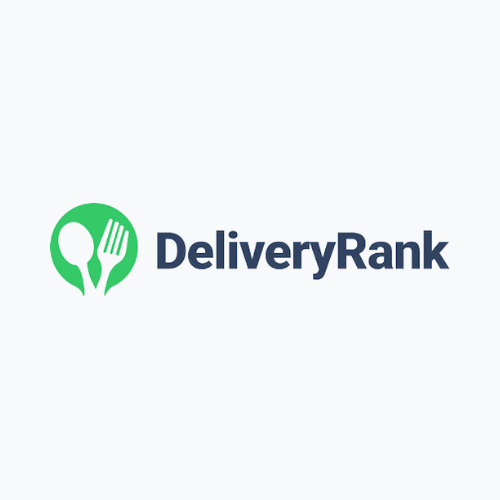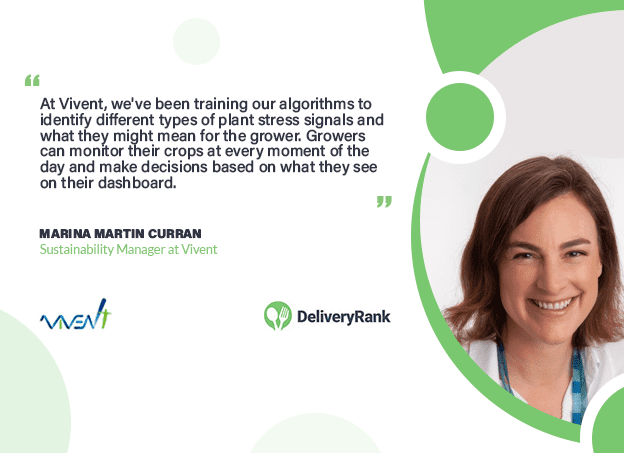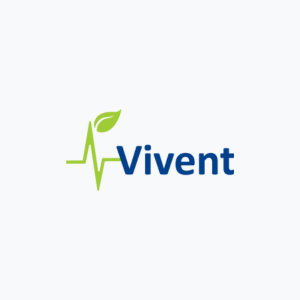
Vivent is a Swiss-based startup that harnesses bio-electrical signals from plants to develop plant health monitoring technologies. In this interview, sustainability manager Marina Martin Curran describes the company’s innovative technology and its potential to revolutionize agriculture as we know it.

Can you tell us about Vivent and its evolution so far?
Vivent was founded in 2012, but it’s only in the last few years that people have started to know us because we’ve been able to commercialize the product that we’ve spent so long researching and developing.
Our product is called PhytlSigns. It’s a device that monitors the electro-physiological signals of plants and their health. You can think of it as an electrocardiogram.
When plants are healthy, they show regular waves every 24 hours, resembling a heartbeat. When a plant is under stress, either because it’s lacking water, suffering a nutrient deficit, or being attacked by a pest, that wave changes.
We use machine learning to analyze the differences in those signals. We’ve been training our algorithms to identify different types of signals, and what they might mean for the grower. Of course, all this is happening in real-time.
The grower can monitor their crops at every moment of the day, and be able to make decisions based on what they see happening. The changes in the signals occur before any visible changes appear on the plant, so it works as an early warning system that gives growers better control of their production site.
We started with greenhouse growers in the Netherlands because they’re very well known for adopting technologies for growing vegetables such as tomatoes, cucumbers, peppers, and lettuces. We also have customers in the cannabis sector in Switzerland and North America, and outdoor tomato growers in Portugal.
We’re currently starting trials on apple trees and vines, and we’re looking forward to expanding into woody plants.
How does PhytlSigns work?
First of all, the grower receives a box with all the equipment. Greenhouse growers can just plug and play, but if it’s outdoors, they would need a solar panel and a battery as backup. In the box, there are eight electrodes that you can plug in to monitor eight plants in one go.
Each electrode forks into two needles, which you apply at the top and bottom of a plant’s stem so you can measure the potential difference in voltage.
Growers can install it themselves, but we usually come out to do the first installation and train them with some best practices. Once everything is set up, we let the signal stabilize for a few days.
After the signal has settled, the grower can log onto the dashboard and see the plant signals in real-time. We also present the grower with predictions based on data collected over the previous days.
The prediction indicates what the plant should be doing, versus what the plant is actually doing. If there’s a big difference, it’s a warning to the grower that the plant is in distress and they need to take action.
Does PhytlSigns specify what the problem is?
Because we’re still very much in the early days, we can specify general stress, drought stress, and a selection of nutrient deficits and pest stresses. But usually, when a grower sees that there’s a problem, they will rush to their crops and identify the issue themselves – maybe it was a particularly hot day and they haven’t opened the windows of the greenhouse, for example.
In the case of pests, growers regularly go into their fields or greenhouses every few days and scout for pests, but they may not always get there in time. PhytlSigns provides information ahead of visual symptoms, which gives the grower more time to apply whatever is needed to stop the problem from spreading.
Vivent also has a lot of interesting applications from a sustainability point of view. For example, if you’re using drip irrigation, we can help you manage your water consumption more efficiently.
We can also support you with the micro-management of fertilization so you can achieve more yields with less fertilization while decreasing the amount of nitrates released to the environment, soil, water table, and even the air.
What is the potential impact of PhytlSigns in terms of yields?
In December 2021, we had our first full year of data for tomatoes grown in greenhouses – which showed a 9% increase in yields. The greenhouse growers took onboard what they saw on the dashboard and were able to make changes early enough to optimize the growing conditions.
We still have a lot to do in terms of learning how to measure water usage, crop protection, and fertilizers. Our aim is to collect data from as many growers as possible, so we can validate our technology further.
How financially viable is it for growers to use PhytlSigns?
We’re confident that our customers find PhytlSigns to have a good return on investment in terms of increased yield and a new way of looking at crop health. The device can be rented as well as bought, and Vivent provides on-going customer support.
Right now, we’re working on the next generation of our device, which will be wireless. It will be much smaller, about half the size of a mobile phone. It will also be cheaper, so growers will be able to have many more of them spread out in the field and monitor more plants.
What do you do with the data that you collect?
We collect 256 bits per second, which is a huge amount. Sometimes we have electrodes that are in place for six months or longer. We have what we call a Plant Days Library where we keep the data of more than 80,000 plant day recordings from 20 different types of plants. This data enables us to give insights to customers.
We also carry out research projects with Agroscope, the Swiss Federal Agricultural Research Institution, to collect data to improve our algorithms and come out with new and more accurate workflows for our customers.
How do you envision the future of Agritech?
The future of Agritech is bright and exciting! I’m a firm believer that the future of agriculture is going to be a combination of low-tech and high-tech.
In terms of agro ecology and regenerative farming, we’re going to go back to some of the old practices that our grandparents were doing, like not tilling fields. At the same time, using technologies like ours, growers would be able to optimize yields and decrease the use of chemicals.
At the end of the day, Agritech is not just about yields, it’s also about food safety. We’re here to make sure that you’re bringing consumers best-in-class produce that they can trust and feel confident eating.




